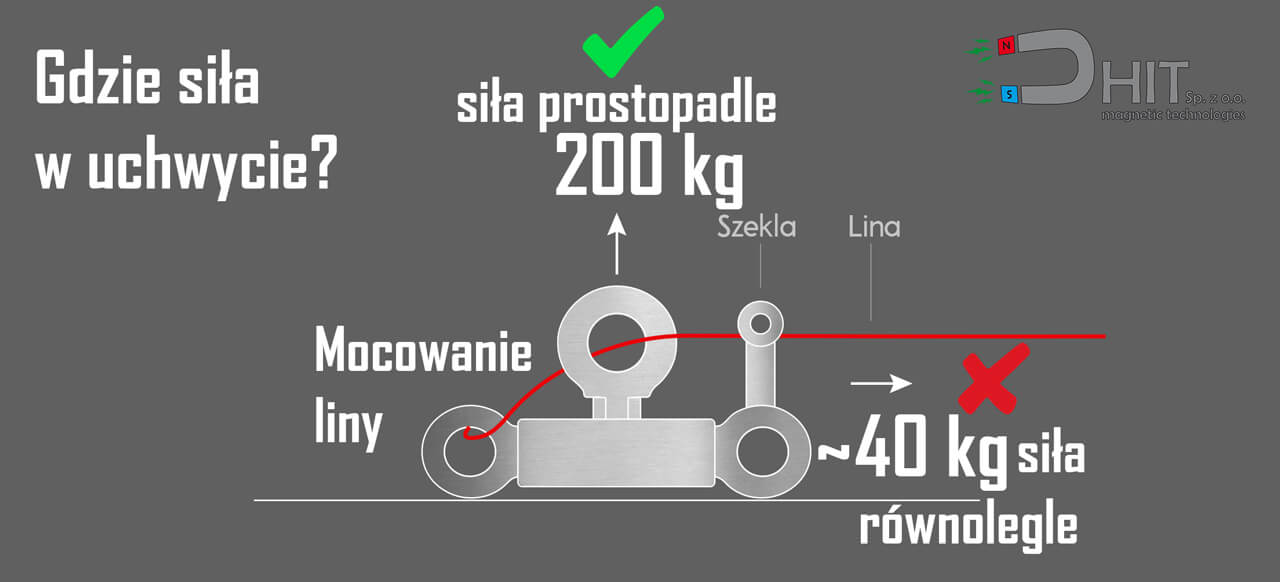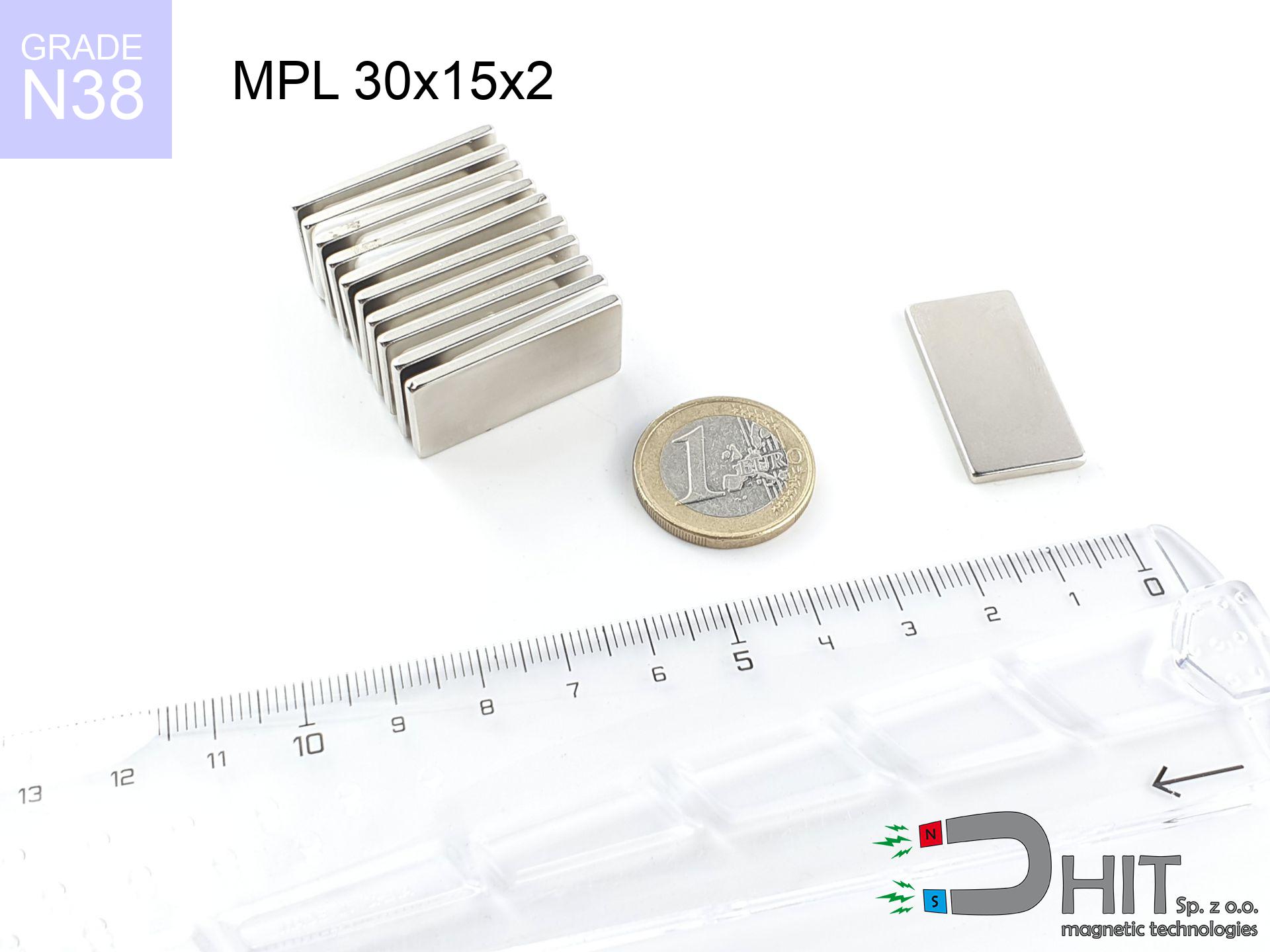UMP 75x25 [M10x3] GW F200 GOLD Lina / N42 - search holder
search holder
Catalog no 210433
GTIN: 5906301814085
Diameter Ø [±0,1 mm]
75 mm
Height [±0,1 mm]
25 mm
Weight
900 g
Load capacity
310 kg / 3040.06 N
Coating
[NiCuNi] nickel
200.00 ZŁ with VAT / pcs + price for transport
162.60 ZŁ net + 23% VAT / pcs
bulk discounts:
Need more?Want to negotiate the price?
Call us +48 22 499 98 98 or write via form on the contact page. Test the magnet's power with our power calculator.
Orders placed by 14:00 are shipped the same day.
UMP 75x25 [M10x3] GW F200 GOLD Lina / N42 - search holder
Magnetic properties of material N42
Physical properties of NdFeB
Shopping tips

Advantages and disadvantages of neodymium magnets NdFeB.
Apart from immense power, neodymium magnets have the following advantages:
- They do not lose power over time. After approximately 10 years, their power decreases by only ~1% (theoretically),
- They are highly resistant to demagnetization by external magnetic sources,
- In other words, thanks to the shiny coating of nickel, gold, or silver, the element acquires an aesthetic appearance,
- They have exceptionally high magnetic induction on the surface of the magnet,
- Magnetic neodymium magnets are characterized by hugely high magnetic induction on the surface of the magnet and can operate (depending on the shape) even at temperatures of 230°C or higher...
- The ability for precise shaping and customization to specific needs – neodymium magnets can be produced in a wide range of shapes and sizes, which expands the range of their possible uses.
- Key role in advanced technologically fields – are used in HDD drives, electric drive mechanisms, medical apparatus or very advanced devices.
Disadvantages of neodymium magnets:
- They are fragile when subjected to a powerful impact. If the magnets are exposed to impacts, we recommend using magnets in a metal holder. The steel housing in the form of a holder protects the magnet from impacts, and at the same time increases its overall strength,
- High temperatures can reduce the strength of neodymium magnets. Typically, after heating above 80°C, most of them experience a permanent reduction in strength (although it is dependent on the shape and size). To prevent this, we offer special magnets marked with the symbol [AH], which are highly resistant to high temperatures. They can operate even at temperatures up to 230°C, making them an ideal solution for applications requiring high-temperature operation,
- Magnets exposed to a humid environment can corrode. Therefore, when using them outdoors, we recommend using waterproof magnets made of rubber, plastic, or other moisture-resistant materials,
- The use of a cover - a magnetic holder is recommended due to the limited production capabilities of creating threads or complex shapes in the magnet
- Health risk arising from small pieces of magnets can be dangerous, when accidentally ingested, which is crucial in the context of children's health. Additionally, small elements of these magnets have the potential to hinder the diagnostic process after entering the body.
Notes with Neodymium Magnets
You should maintain neodymium magnets at a safe distance from the wallet, computer, and TV.
The strong magnetic field generated by neodymium magnets can destroy magnetic media such as floppy disks, video tapes, HDDs, credit cards, magnetic ID cards, cassette tapes, etc. devices. They can also damage devices like video players, televisions, CRT computer monitors. Do not forget to keep neodymium magnets away from these electronic devices.
Magnets made of neodymium are highly fragile, they easily fall apart and can become damaged.
In the event of a collision between two neodymium magnets, it can result in them getting chipped. They are coated with a shiny nickel plating similar to steel, but they are not as hard. In the case of a collision between two magnets, there can be a scattering of small sharp metal fragments in different directions. Protecting your eyes is essential.
It is important to keep neodymium magnets away from children.
Neodymium magnets are not toys. You cannot allow them to become toys for children. Small magnets pose a serious choking hazard or can attract to each other in the intestines. In such cases, the only solution is to undergo surgery to remove the magnets, and otherwise, it can even lead to death.
Under no circumstances should neodymium magnets be brought close to GPS and smartphones.
Intense magnetic fields generated by neodymium magnets interfere with compasses and magnetometers used in navigation, as well as internal compasses of smartphones and GPS devices.
The magnet is coated with nickel - be careful if you have an allergy.
Studies show a small percentage of people have allergies to certain metals, including nickel. An allergic reaction often manifests as skin redness and rash. If you have a nickel allergy, try wearing gloves or avoid direct contact with nickel-plated neodymium magnets.
Neodymium magnets are among the strongest magnets on Earth. The surprising force they generate between each other can shock you.
Please review the information on how to handle neodymium magnets and avoid significant harm to your body, as well as prevent unintentional damage to the magnets.
Dust and powder from neodymium magnets are flammable.
Do not attempt to drill into neodymium magnets. Mechanical processing is also not recommended. Once crushed into fine powder or dust, this material becomes highly flammable.
Neodymium magnets can attract to each other due to their immense internal force, causing the skin and other body parts to get pinched and resulting in significant swellings.
In the case of placing a finger in the path of a neodymium magnet, in that situation, a cut or a fracture may occur.
People with pacemakers are advised to avoid neodymium magnets.
Neodymium magnets generate strong magnetic fields. As a result, they interfere with the operation of a pacemaker. This happens because such devices have a function to deactivate them in a magnetic field.
Neodymium magnets can demagnetize at high temperatures.
Although magnets have demonstrated their effectiveness up to 80°C or 175°F, the temperature can vary depending on the type, shape, and intended use of the specific magnet.
Safety rules!
Please see the article - What danger lies in neodymium magnets? You will learn how to handle them properly.

![holders for fishing in water UMP 75x25 [M10x3] GW F200 GOLD Lina / N42 holders for fishing in water UMP 75x25 [M10x3] GW F200 GOLD Lina / N42](https://cdn3.dhit.pl/graphics/banners/magnet.webp)
![UMP 75x25 [M10x3] GW F200 GOLD Lina / N42 - search holder](https://cdn3.dhit.pl/graphics/products/ump-75x25-m10x3-gw-f200-gold-lina-buh.jpg)


![SM 32x425 [2xM8] / N52 - magnetic separator SM 32x425 [2xM8] / N52 - magnetic separator](https://cdn3.dhit.pl/graphics/products/sm-32x425-2xm8-tas.jpg)


